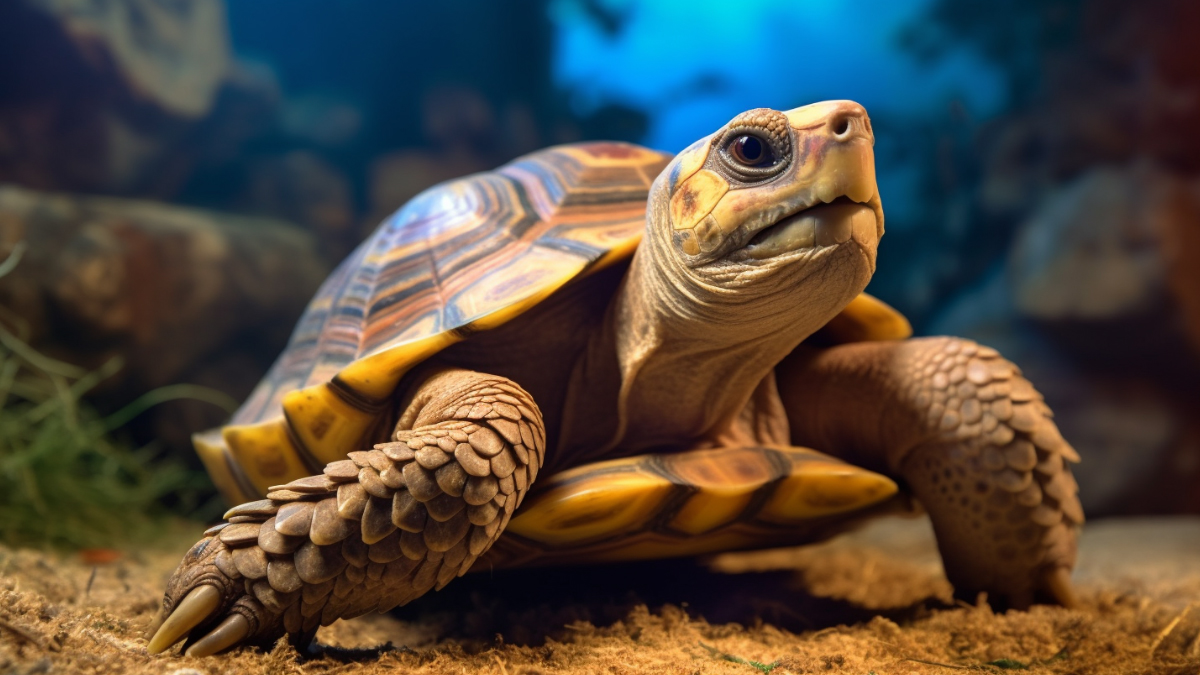Tortoise Scutes 101: All Your Questions Answered
In our childhood, we grew up with the idea that the shells of tortoises are their houses. But the shell is a part of their body and is made of multiple scutes. These bony plates give protection to the internal organs and can vary in number, shape, or size.
So, what are tortoise scutes? Tortoise scutes are thick and hard scales on the top and belly sides. But top scutes are different from belly scutes. Tortoises typically have 13 top scutes.
You will learn more about the tortoise scute anatomy, and its classifications, and find answers to your questions related to tortoise scutes. Let’s get started.
What Are Tortoise Scutes?
Contents
Tortoise scutes are hard scales that make the tortoise shell. You will also find scutes on the lower shell or the plastron, but they are different. The carapace or the upper shell is the dome-like shape that we see from the outside.
If you look closely, it consists of 13 dorsal scutes or epidermal laminae. Dorsal scutes refer to the scutes on the dorsal or top side of the shell. These scutes are divided into two categories, vertebral and coastal scutes. Marginal scutes are also there, but I will talk about them a bit later. Scutes are made of keratin, just like our fingernails.
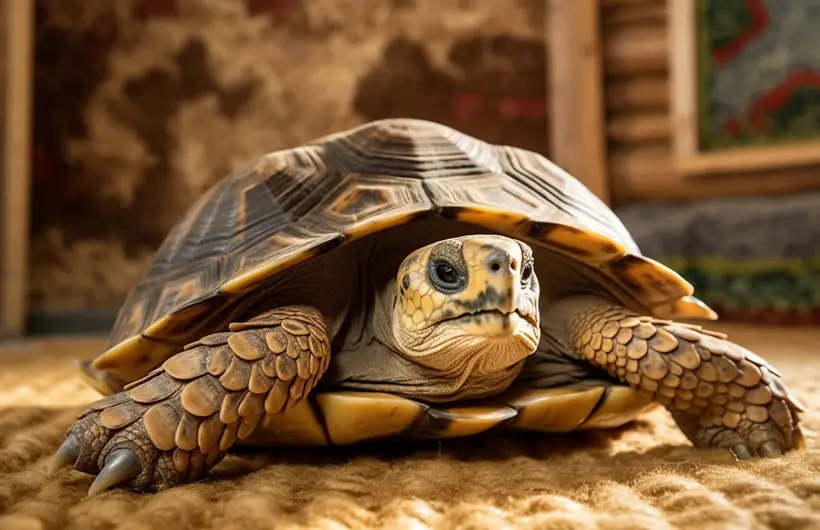
There is no blood supply to the keratin tissue, so these tissues are technically dead. They also don’t have any nerves. But these scutes grow as tortoises grow. And some aquatic turtle species shed their scutes.
In the case of land tortoises, rings are formed as the scutes grow. On the tortoise carapace, growth rings will appear at a rate of one ring per year.
So, you can tell the age of a tortoise by checking the number of rings on the scute. You can also assume the gender of a tortoise by looking at the scutes. In the next section, I will go over different types of scutes tortoises have on the upper and lower sides of their shell.
Scute Anatomy of Tortoise
Scutes on a tortoise shell can be of two types, one on the carapace and the other on the plastron. Let’s take a closer look at them.
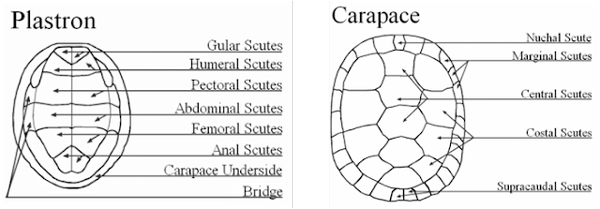
Carapace Scutes
Five different types of dorsal scutes are present on the carapace. They sit on the fused bony carapace and are visible from the outside. Here is a detailed overview of carapace scutes.
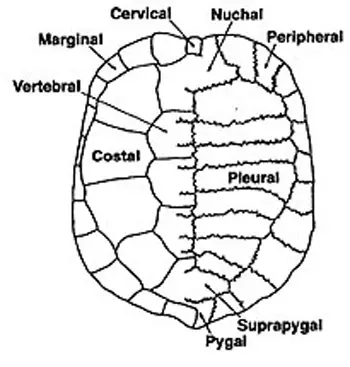
1. Nuchal Scute
The nuchal scute is the first scute behind the head. It is typically smaller than the scutes on the back but larger than the marginal scutes around the shell. This scute protects the neck area of the tortoise.
2. Central Scute
It is a part of the vertebral scutes and is positioned in the middle of the back. When seen from a side, this is the topmost scute. And this is a single scute.
3. Precentral Scutes
Precentral scutes are similar to the central scute and are arranged in the same line. There are two precentral scutes before and after the central scute. One central and four precentral scutes are known as vertebral scutes together. Most tortoises have five vertebral scutes in general.
4. Lateral Scutes
These scutes are positioned beside the vertebral scutes. On each side, you will commonly find four lateral or coastal scutes. So, a total of eight coastal scutes are present on tortoises. The vertebral scutes and coastal scutes are known as top scutes together. So, there will be a total of 13 top scutes in most cases.
5. Marginal Scutes
Smaller scutes along the edge are known as marginal scutes. They start from and end at the nuchal scute and are arranged like a perimeter around the carapace. The number of marginal scutes can vary depending on the species and age of the tortoise. But there will be 24 marginal scutes in general.
Plastron Scutes
Like the scutes on the top of the carapace, tortoises have scutes on the bony plates of the plastron. These are located on the belly side and aren’t easily visible until you turn the tortoise upside down. Scutes on the bottom side are also known as ventral scutes. Here is a detailed overview of these scutes.
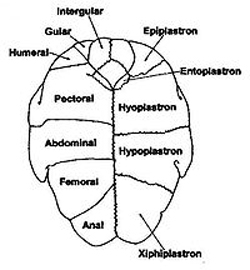
1. Gular Scutes
Like nuchal scutes, gular scutes are the first scute pair after the head. So, you should find them beneath the nuchal scutes.
2. Humeral Scutes
The scute structure changes a bit here. Unlike the top scutes, tortoises have scute pairs that stretch all the way to the marginal scutes. The first scute pair after gular scutes are called humeral scutes.
3. Pectoral Scutes
These are slightly larger than humeral scutes and positioned behind them. You will see two pectoral scutes here.
4. Abdominal Scutes
Abdominal scutes are the pair of scutes after pectoral scutes and they are the largest scutes on the plastron.
5. Femoral Scutes
Femoral scutes follow the abdominal scutes and are slightly smaller than the abdominal scutes.
6. Anal Scutes
At the very end of the plastron, you will see two anal scutes. These scutes are often triangular in shape.
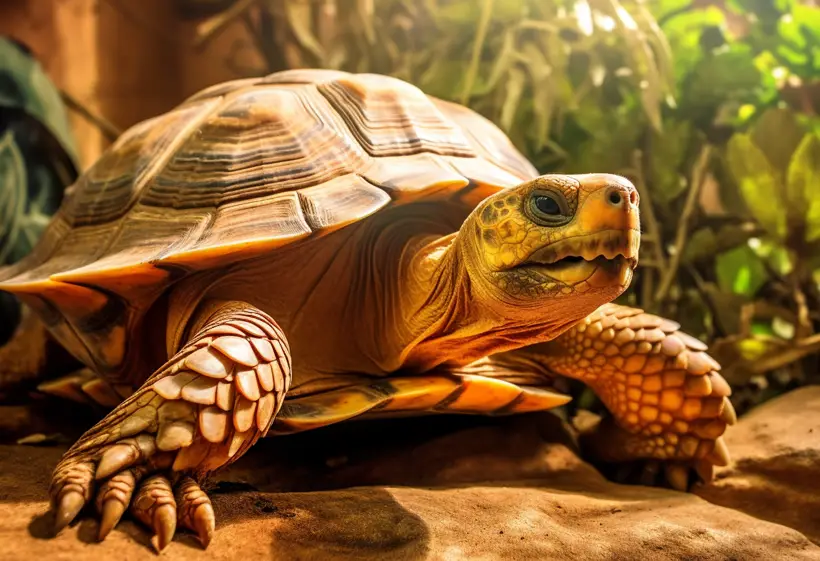
FAQs
Here are answers to some frequently asked questions about tortoise scutes.
The plastron scutes of male tortoises are more concave, but female tortoises have flat plastron scutes. And anal scutes of male tortoises are rounded, but female tortoises have pointy anal scutes.
Here is a video that can help you:
In general, a tortoise shell has about 34 scutes, including the vertebral, coastal, marginal, and nuchal scutes. But some tortoises may have 32 scutes.
No. Land tortoises don’t shed scutes. Only a few aquatic turtle species may shed their scutes.
Final Words
Tortoise shell is an interesting thing to watch but many of us don’t know about the building blocks of this shell. The scales that make the shell on the dorsal and ventral sides are known as tortoise scutes. These hard scales protect tortoises from predators and abrasions.
The pattern of dorsal and ventral scutes is totally different. Dorsal scutes can be of five types and ventral scutes can be of six types. Besides learning about the shell anatomy of tortoises, you can easily identify the gender of tortoises with the shape of these scutes.

